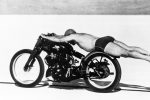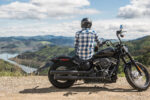The Risk Of Motorbike Accidents at Racing Festivals

Attending a motorbike racing festival is an exhilarating experience, even for those who prefer to watch rather than race. The high-speed action and close calls on corners are a big part of why it’s such a thrilling spectacle, but think twice before trying to replicate this in your own riding away from the track.
Sadly, there is usually an influx in the number of motorcycle accidents in the areas where racing festivals are held during the events, caused by dangerous or inexpert driving. The Isle of Man Constabulary confirmed last year that half of all motorcycle collisions on the island occur during the annual TT festival. Understanding the main risks and how to safeguard against them can make all the difference in ensuring your safety.
1. Ride-in and ride-out hazards
The journeys to and from a racing festival is often when the most accidents happen. You’re riding on unfamiliar roads, surrounded by heavy traffic, and having to follow signs with diversions rather than main routes. Sudden braking and turning increases your chance of unbalancing, especially if you’re also navigating weaving in and out of cars.
Check your excitement and concentrate on driving at steady speeds. This will give you more time to process signs with directions and instructions and assess the road ahead. Employ defensive riding techniques, maintaining a safe follow distance behind other vehicles and using strategic lane positioning to enhance your visibility to other drivers.
2. Common types of accidents
While some accidents are unavoidable, many can be anticipated by knowing what to look out for. The most common type of accident on the track at racing festivals involves high-speed crashes, especially when riders are attempting to push their limits. Don’t be tempted to imitate these speeds on normal UK roads where speed limits are in force and others are sharing the space.
Another issue behind accidents at racing festivals is rider fatigue, as tiredness reduces your response times. Even the most experienced riders can suffer from lapses in concentration after long hours of driving or socialising. Take particular care when returning from the festival as it’s likely you’ll be fatigued, and build plenty of rest breaks into your journey.
Did you know? It’s estimated that up to 20% of global road collisions are caused by fatigue, making it just as dangerous as drink-driving.
3. What to do after a crash
No one matter how careful you are, crashes are always a possibility, especially if those around you are not behaving responsibly. Follow this step-by-step process if you do have a collision:
- Step 1: Safety first
If you’re able, move yourself and your bike out of harm’s way, and turn on your bike’s hazard lights to alert people to the crash. Check yourself and others for any injuries. If safe to do so, help move others to safety. - Step 2: Call emergency services
You must report the accident to the police immediately. If serious injuries are suspected or there is a risk of fire, you should also request an ambulance and the fire service. - Step 3: Gather evidence
Documenting the scene is in your best interests. It can support insurance claims and motorcycle accident claims through specialist lawyers for crashes that you didn’t cause. Take pictures and videos of your bike and other vehicles, the road conditions and the surrounding area to paint a full picture. - Step 4: Swap details
Exchange contact details with other drivers and take the registration numbers of any vehicles involved. You should also obtain the insurance details of each driver and their driver’s licence details, if possible.
4. How to stay safe
Whenever you’re riding your motorcycle, ensure you’re wearing suitable protective gear. It should have hi-vis markings to make you visible and appropriate cushioning in case you fall. Remain defensive whenever driving and try to travel in daylight as far as possible. Always plan routes in advance, especially if you’ll be navigating unfamiliar roads.










